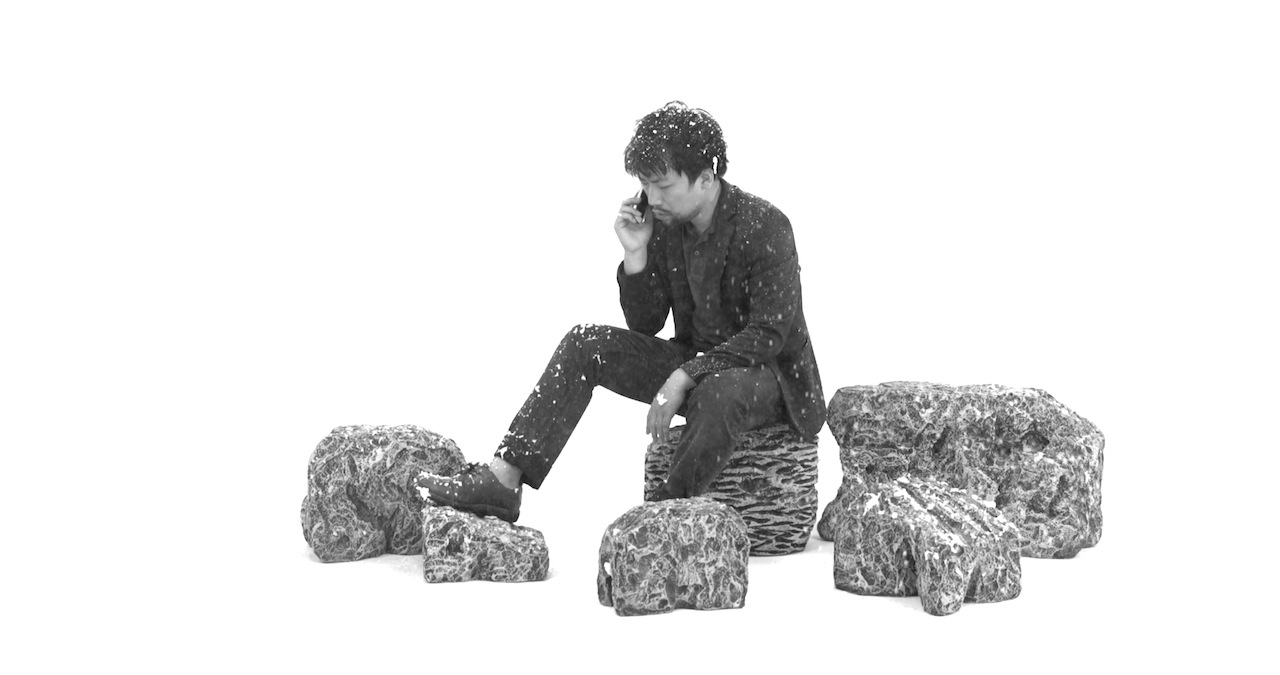Selected by Aimee Lin
I got to know about Tao Hui’s art through his first gallery solo show at Aike-Dellarco, Shanghai, this year, in which there was an installation in two parts comprising a sound piece, titled 1 Character, and a silent video, titled, 7 Materials. To my eyes, the combination of sound and visuals proved both charming and clever. In the main space the seven video clips that formed 7 Materials (for example a group of girls half-buried in a soil pit in the rain, a reporter interviewing a corpse), were projected in random order on a screen built to resemble a bus shelter. Accompanying this was a small room that looked like a telephone box or confessional in which headphones relayed the tragic life-experience of a female protagonist. The random association between the subjective audio and the visual fragments created a narrative structure that is not only postmodern, but also an open-ended demonstration of Tao’s subversive thinking on the linear narrative in video art.
From his works, it can be seen that Tao has a deep interest in ordinary people’s performative expressions. He often uses first-person narration. Sometimes the stories are absurd and the performances of the characters are exaggerated, which indicates the interesting cross-influence between ordinary people’s personal (emotional or identity) crises and the people who populate entertainment culture such as television drama or reality shows.
In the video Talk About Body (2013), Tao sits in a bedroom, wearing female Muslim dress and gives a first-person speech to an assembled group about his body type. The speech is an anthropological report on Tao’s own body. His latest work Excessive (2015) is a silent video using subtitles to present dialogue. It tells the story of a girl, who was born with an eleventh finger, the additional digit causing a series of family dramas. In this work, Tao adopts a strategy used by Lars Von Trier in his film Dogville (2003) – he reduced the environment and audio to a minimum, and relied on the character’s performance and the narratives presented to reveal the absurd and dramatic nature of daily life.
Tao’s works are impressive not only because of what they deal with (body, identity, narration and performance of ordinary people’s emotions), but also because they are clever and crafty, sarcastic yet sincere, showing the artist’s personal insight into human beings and his interesting understanding of narrative structure in moving images. His recent work also highlights his experiments with video installation, which perhaps will lead to new language. Something that I look forward to seeing.
Tao Hui was born in 1987 and raised in a small village in Sichuan (now Chongqing Province), China and now lives and works in Beijing. He was awarded the 2015 Grand Prize at the 19th Contemporary Art Festival Sesc_Videobrasil: SouthernPanoramas, São Paulo, Brazil.
This article was first published in the January & February 2016 issue of ArtReview.
